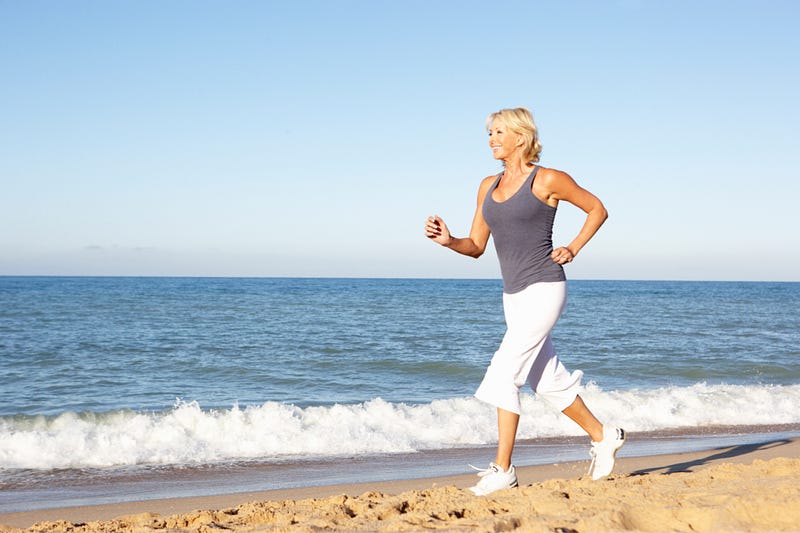
How two fitness pros advise us on reaching improved health
Ryan, my fitness trainer at Genuine Fitness here in Eugene, watched my form as I did some kettlebell squats.
“Better, “ he said. “I noticed you’re not lifting your heel any more when you’re all the way down.”
I didn’t? I thought. When did that happen, I wondered.
Wasn’t so good on the Turkish get ups. My hands have been trashed for weeks with severe CMC joint arthritis, so any pressure on the pads of the palm has been excruciating. The wait to see a doctor for cortisone shots was excruciating too, as those who have been holding off on their medical care created a tsunami of appointments all at the same time.
It would be fair to guess that a good many of those treatments involve bad habits we picked up under quarantine.
My form was crap. It took a while for me to remaster the move.
I’ve been working with Ryan since last August when I first moved here. Typical of good trainers, he has a great memory for detail.
As I finished my set of squats, he said,
“It’s also great to see that you havent worn knee braces for months.”
Really? Holy cow. I didn’t even notice. I’ve not worn them for so long that I had forgotten all about the sharp pain that used to accompany my squats.
This is just one reason I use a trainer. As we age, and as our bodies change, there are sometimes very subtle differences that are happening as we try so hard to find our way to our best health. Much of the time, we’re not even noticing small improvements. Sometimes those improvements are genuinely significant. So often we are looking for much bigger indications that we’re making progress, that our goal of being 100% is sometimes so big that we’re not noticing the critical proof that we are indeed improving.
When I stopped wearing the knee braces is anyone’s guess. I just forgot about them. But having Ryan point it out is part of why having professional help is so important.
Here’s why:
Ryan was telling me a story about one of his clients, a woman who is carrying some sixty pounds more than she wants to. Recently she made it all the way to the top of nearby Mt. Pisgah and back down without stopping AND in under two hours. For her that was a huge breakthrough.
She also has been able to make what appear to be small, but very signficant changes in her form while lifting. Each one of those changes is indicative of increased strength and balance. She’s busty, so her lower back has hurt her for a long time. As she has gained strength, that back pain has resolved. Now her shoulders are more tired as she does certain kinds of upper body work because her lower back no longer pains her and she can focus on proper form. Her shoulders are doing the work that the rest of her used to compensate for. That’s great news.
Ryan pointed out those things to her. Like me, she hadn’t really noticed either.
It is so easy to get discouraged when we can’t perceive how our bodies are responding to the work. We want to be at our peak all the time, and NOW.
Between the two of us as Ryan’s clients, what each of us imagines as our 100% is very different. However, it’s always moving. Each time we improve, the goal moves again, a forever-shifting set of standards based on how we judge ourselves as “not there yet” right at this moment.
For so many folks who are now crowding into Genuine Fitness and my local Planet Fitness, we are often impatient to see results, particularly if we might have packed on a bit too much, or decided that the pandemic was the wakeup call we needed. The downside is that we can want our 100%,whatever that might look like, a lot faster than it might be possible. What is possible is to make interim checks to see how things are coming along. Here’s one way to do that:
https://www.womenshealthmag.com/weight-loss/a19932218/measure-your-wellness-progress/
While unrealistic goals can be defeating, taking stock of the small things, like increased strengh, or how our balance in one exercise translates to working around the house. The proof is there, like the disappearance of my knee braces.
Ryan’s wife, who just turned 44, has some hip issues, which have been flaring up this past year. She’s a runner, and said to Ryan recently that she has to be prepared for never being able to run again. Ryan thinks that’s a bad way to go about rebuilding. The truth is that often an injury or flareup is just that, and unless we lose a limb or something else catastrophic, the end of a fitness routine as we know it may not be that at all. The new 100% is how we can get the best out of where we are right now, until such time as the body adapts, and some other options become available.
Ryan explained that there are certain positions that are too painful for her to do on machines, so she’s modified them. Interestingly, her modifications not only added core work but also are building more strength in her thigh muscles. So, in effect, the work she was doing just to build her shoulders is now nearly a whole-body exercise.
The best part of that kind of adaptation is that over time, it’s entirely possible that what is troubling her right hip will resolve quietly because she is unwittingly strengthening parts of her body that need it. While it’s anyone’s guess if that will happen, the point is that making a pronunciation that you’ll never do X again might be a bit premature.
The body LIKES being at 100%, and as Ryan likes to point out, as long as we keep working at it, there are small and often invisible adaptations that it’s making to ensure that we are at 100%.
Dr. Kevin Plummer, my sports chiropractor, added to this discussion by pointing out that the body considers itself at 100% at any given time, and will continue to work at maintaining its best performance often in spite of what we do it or deprive it of, such as good nutrition, regular movement and proper rest.
“One hundred percent is a constantly moving target in my life, too,” Plummer explains. “Years ago I used to say that if I could squat 225, I’d be happy. Today, at 48, I can do 425. The needle is always moving, which is why we need to acknowledge the often subtle but very important changes that are constantly happening.”
Ryan’s client, who used to take four hours and untold numbers of rest breaks to reach the top of Mt. Pisgah, may feel that she should be able to do better. Perhaps. However, our unrelenting pressure on ourselves to perpetually move the bar higher means that it’s hard to be pleased with the progress we have made. It’s hard to be happy when we are always and forever finding what’s wrong with us. There will always be something just out of reach.
Plummer describes it this way:
“I have one client who came in last year. The pain level in his lower back was a seven out of ten. He was all hunched over. Now when he comes in he still complains about his back pain, which is now at a four. He’s standing upright, which he couldn’t last year. It’s so easy to forget where we were when we are always focusing on what’s wrong in the moment.”
When you and I can pause for a moment and acknowledge the progress we’ve made, that benchmark allows us a critical moment of celebration, Plummer explains. It’s also a way to have more joy, for it allows us to step off the endless flywheel of effort.
This Huffington Post article describes how to establish fitness goals. I would add one proviso, which is to simply remember to celebrate the small wins. Forgetting that can make this a slog, and we can come to resent the entire process when being fit is meant to be joyful.
Plummer keeps detailed track of his workouts and every bit of progress he makes. He also has scheduled breaks, which he punctuates with time with his boys camping and exploring. The rest times are as key to his development as the workouts.
Plummer says that the failure to take breaks is one key factor in how we can backslide, either out of sheer exhaustion, boredom or we become resistant.
“When we push even harder, and the body responds, as it must, by failing or faltering or even losing muscle, we take it personally. It’s just the body demanding what it needs. It isn’t a moral failure on our part for not working hard enough. More so, it is likely a combination of not allowing play time, rest time and having unrealistic expectations of what 100% for us looks like at this point in our lives.”
This weekend Eugene is facing triple digit temperatures, which can be exceedingly dangerous for athletes. The heat is likely to delay the scheduled Olympic trials. That’s a hint. For if the best in the world know better than to push themselves in dangerous temperatures, we might back off a bit as well.
While being able to afford fitness professionals isn’t always available, if it is,the investment is invaluable. If nothing else, having someone regularly point out our progress, particularly on those days when we’re frustrated, can be worth the cost. They see what we don’t. The gift of that perspective can at times make all the difference.

Comments powered by Talkyard.